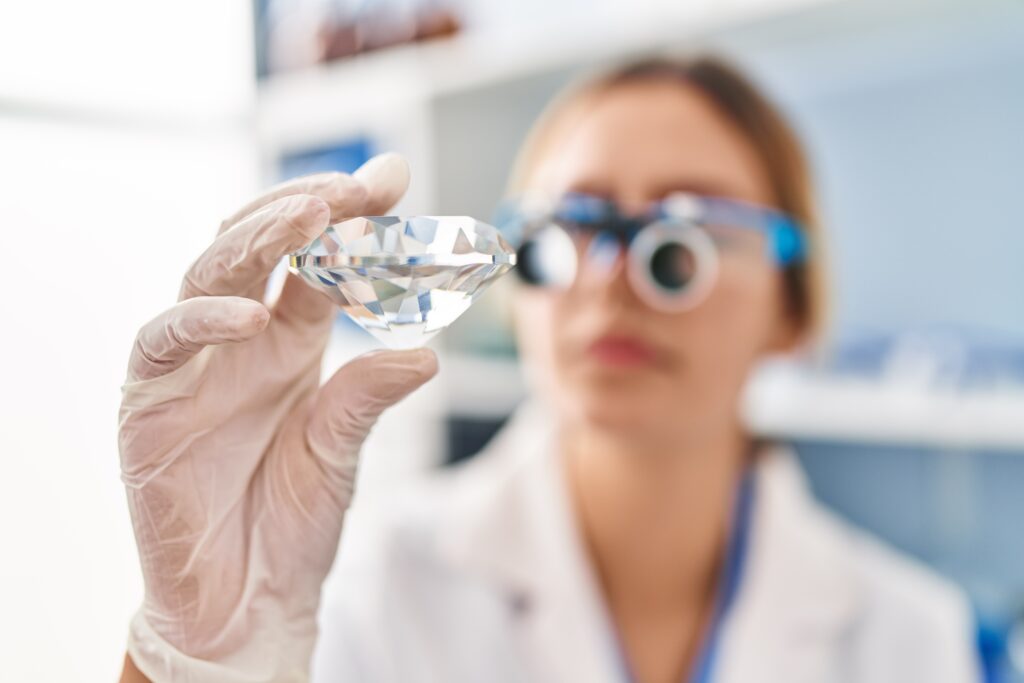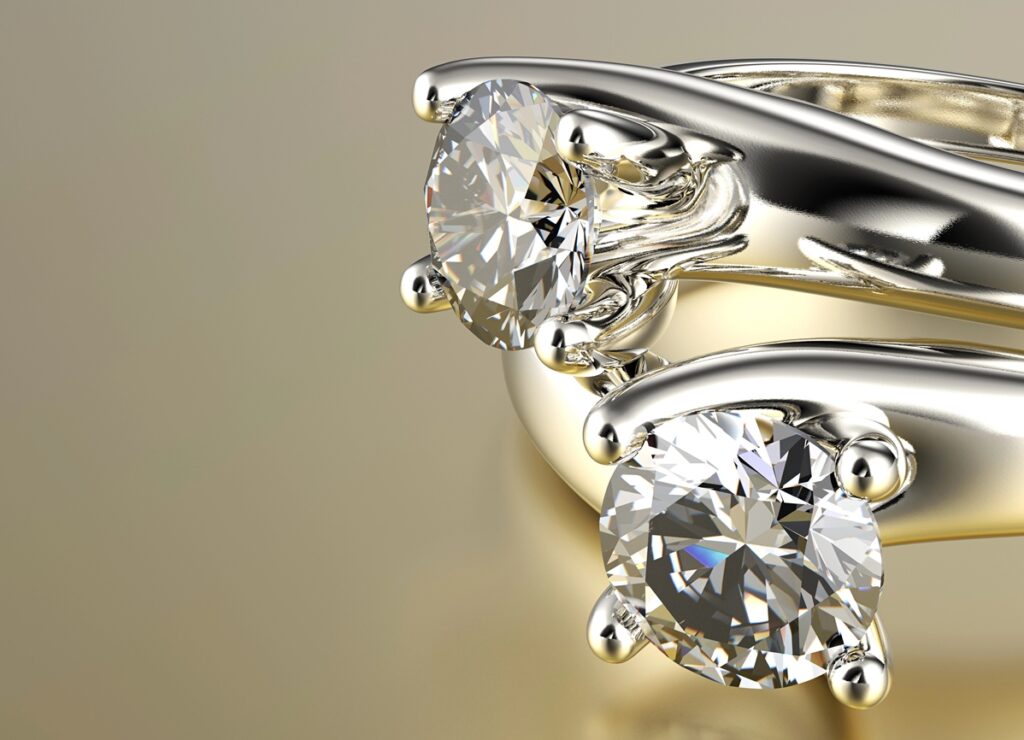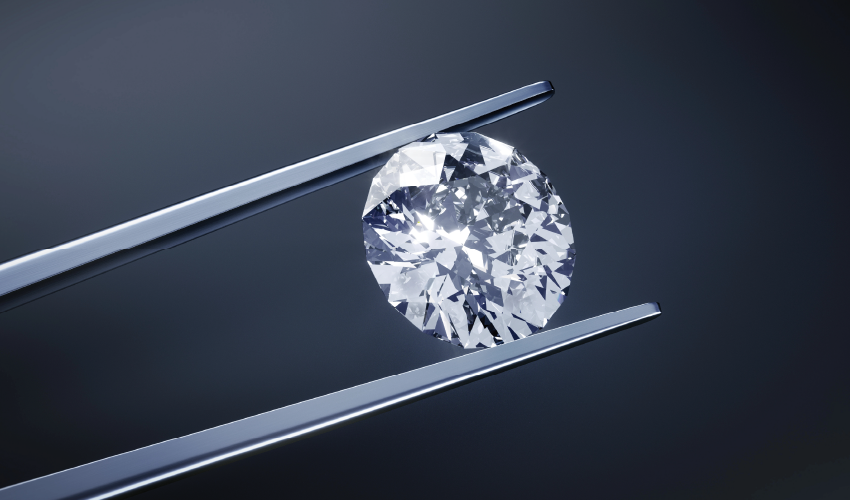What Are Lab-Grown Diamonds?
Lab-grown diamonds, often referred to as synthetic or man-made diamonds, are diamonds that are identical to natural diamonds in both appearance and structure. However, instead of forming over millions of years in the Earth’s mantle, they are created in a laboratory using advanced technological processes that replicate the natural conditions under which diamonds form. These processes involve either high-pressure, high-temperature (HPHT) systems or chemical vapor deposition (CVD), both of which begin with a diamond “seed” to grow the final product.
At Toanoi Jewelry, we proudly offer lab-grown diamonds of the highest quality, combining exceptional craftsmanship with unbeatable value. Our lab-grown diamonds are meticulously created using advanced technology, ensuring they are chemically, physically, and optically identical to natural diamonds. With a focus on sustainability, ethical sourcing, and affordability, we provide stunning diamonds that meet your expectations without compromising on beauty or budget. Whether you’re looking for a dazzling engagement ring or a unique piece of jewelry, Toanoi Jewelry delivers the perfect balance of quality and price. Explore our collection today and discover the brilliance of lab-grown diamonds!

Are Lab Grown Diamonds Real?
Yes, lab-grown diamonds are just as real as natural diamonds. The only distinction lies in their origin: lab-created diamonds are grown in controlled laboratory environments, while natural diamonds form over millions of years deep within the Earth. Chemically, physically, and optically, lab-grown diamonds are identical to natural diamonds, sharing the same hardness, brilliance, and fire. This makes them an equally stunning and authentic choice for any jewelry piece.
A common misconception is that lab-created diamonds lack the qualities of natural diamonds, but this is not true. In reality, lab-grown diamonds are virtually indistinguishable from natural diamonds. Only experts using specialized laboratory equipment can identify subtle differences in their growth patterns. Beyond these minor distinctions, lab-created diamonds possess the same chemical composition, physical properties, and optical brilliance as natural diamonds, making them an equally stunning and authentic choice.
Lab-grown diamonds undergo the same rigorous grading process as natural diamonds, evaluated on the four Cs: cut, color, clarity, and carat weight. Reputable gemological laboratories, such as the Gemological Institute of America (GIA) and the International Gemological Institute (IGI), certify lab-created diamonds using the exact same standards applied to natural diamonds. This ensures that lab-grown diamonds meet the highest quality benchmarks, providing customers with confidence in their authenticity and value.
Lab Grown VS Natural Diamond
The only distinction between natural and lab-created diamonds lies in their origin. Natural diamonds form deep within the Earth’s mantle over billions of years under intense heat and pressure. In contrast, lab-grown diamonds are created in a matter of weeks to months using advanced technology that replicates these natural conditions, starting with a diamond seed that shares the same chemical composition as natural diamonds. To the naked eye—and even under magnification—lab-created diamonds are virtually indistinguishable from natural ones. Only specialized equipment can detect subtle differences in their growth patterns. While there are no physical or optical differences between the two, here’s how they contrast:
Origin
Natural diamonds are formed naturally over billions of years, while lab-grown diamonds are created in controlled laboratory environments.
Environmental Impact
Lab-grown diamonds are generally considered more sustainable, as they avoid the environmental disruption caused by mining.
Price
Lab-grown diamonds are typically more affordable, offering similar quality and beauty at a lower price point.
Rarity
Natural diamonds are much rarer than lab-grown diamonds. Because of their limited quantity, natural diamonds have been cherished for their enduring value and passed from generation to generation.



Types of Lab Grown Diamonds
To the naked eye, it’s impossible to distinguish between natural diamonds, HPHT (High-Pressure High-Temperature) lab-grown diamonds, and CVD (Chemical Vapor Deposition) lab-grown diamonds. Only experts using specialized equipment can detect subtle markers related to their growth conditions. Both HPHT and CVD methods produce real diamonds that are chemically, physically, and optically identical to natural diamonds, with no differences in durability or quality. The only variations lie in their growth patterns and the time it takes to create them—natural diamonds form over billions of years, while lab-grown diamonds are produced in weeks to months. Regardless of their origin, all three types of diamonds offer the same brilliance, hardness, and beauty.
HPHT: High Pressure High Temperature
The HPHT method replicates the natural conditions under which diamonds form deep within the Earth. In this process, a diamond seed is placed in a specialized chamber and exposed to extreme heat—over 2,000 degrees Celsius, and immense pressure, reaching up to 1.5 million pounds per square inch. Under these conditions, carbon atoms in the chamber bond with the seed, gradually crystallizing to form a diamond. This method produces diamonds that are chemically, physically, and optically identical to natural diamonds, offering the same brilliance and durability. The only difference is the significantly shorter time frame: while natural diamonds take billions of years to form, HPHT diamonds are created in a matter of weeks or months.
CVD: Chemical Vapor Deposition
CVD diamonds are created by placing a thin diamond seed in a vacuum chamber filled with a carbon-rich gas mixture, usually methane and hydrogen. The chamber is heated to extremely high temperatures, causing the gas molecules to break down. As the carbon atoms are released, they gradually settle onto the diamond seed, building up layer by layer until the diamond reaches its desired size. Some CVD diamonds may undergo additional treatments involving pressure and heat to enhance their color or clarity. This method produces diamonds that are chemically, physically, and optically identical to natural diamonds, offering the same brilliance and durability. The CVD process is highly controlled, allowing for the creation of high-quality diamonds in a matter of weeks.

Mining Free
Lab diamonds are a responsible choice as they are grown with precise technology that doesn't involve mining.

Beauty
Lab diamonds have the same physical, chemical, and optical properties as natural diamonds.

Value
Lab diamonds offer excellent value—so you can maximize your budget across the 4 C's.
